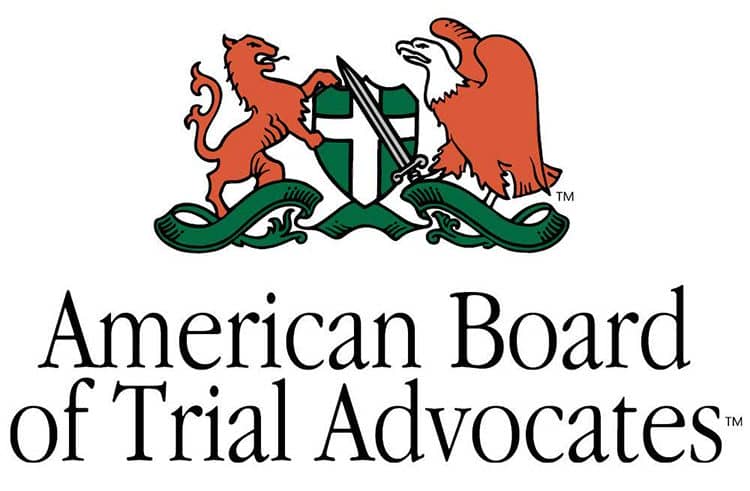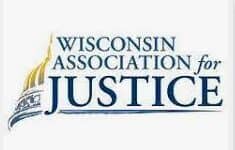Distracted driving is one of the most common causes of accidents and injuries. In Wisconsin personal injury cases, the burden of proof lies on the injured victim to prove that the other driver’s negligence caused their injuries. Therefore, in texting and driving accident cases in Wisconsin, it’s critical to present driver distraction evidence.
If the other driver was talking to someone on the phone, texting, or using social media or another app in the moments before they struck your vehicle, your personal injury attorney must move fast to find and preserve all possible evidence for distracted driving.
With the right investigative tools and an experienced lawyer on your side, you can pull data that shows whether the driver was scrolling, calling, or texting just before impact. Urgency is critical in these texting and driving accident claims, so consult an attorney as soon as possible after the crash.

Distracted Driving Laws in Wisconsin
Under Wisconsin Statute 346.89(3), it’s unlawful for a driver to compose or send text messages or emails while operating a motor vehicle. It also applies when the vehicle is stopped at a red light or stop sign, so long as the engine is running and the car is in gear.
Wisconsin has also adopted the federal ban on texting for Commercial Driver License (CDL) holders (49 CFR § 392.80); violations result in disqualification of driving privileges. Texting is allowed only if the driver needs to contact police or emergency services.
To succeed in a personal injury claim based on distracted driving, you not only need to prove that the driver was distracted, but that their distraction (and resulting negligence) caused your accident. Your lawyer must demonstrate:
- The driver was distracted due to an activity (texting, reaching, eating, scrolling)
- That distraction interfered with their ability to safely operate the vehicle
- That interference caused them to breach the duty of care (they failed to act as a reasonably prudent driver would)
- That breach of duty by the distracted driver caused your injuries
How to Prove the Driver Was Texting
Legally admissible evidence for distracted driving in a car accident claim may include the following:
Cell Phone Records
If the at fault driver was using a cell phone at the time of the crash, the driver’s phone may contain evidence. The time-stamped records of text messages sent and received, call logs showing duration and timing of phone calls, and mobile data usage logs (internet browsing, app use) can provide strong circumstantial evidence of distraction.
However, AT&T, Verizon, T-Mobile, and most other providers only retain this information for 90–180 days. You must send them a preservation of evidence letter within a few days after your accident.
Device Forensics (With Court Approval)
If the phone logs aren’t sufficient or the driver claims someone else was using their phone, your attorney may be able to pursue forensic imaging of the device. Getting approval for this level of access requires showing the court that call logs were inconclusive or that there’s already a strong suspicion of phone use.
A digital forensic expert can extract:
- Precise timestamps of app launches (Facebook, YouTube, TikTok, Spotify)
- Recent typing activity (including searches and texts)
- Screenshots or cached content
- Deleted texts or call history
- Bluetooth pairing records (was the phone connected to the car or handheld?)
Event Data Recorder (Black Box) Data
Most vehicles manufactured after 2013 contain some version of an EDR. It’s essentially a crash data recorder that stores 5 to 20 seconds of data before and after the accident. Using the vehicle data points such as speed at impact, acceleration and braking, steering input, and seatbelt status, your attorney can identify behavioral clues about the driver that suggest distraction.
Video Footage from Surveillance Cameras and Dash Cams
In some cases, video evidence may be available from traffic cameras installed near the accident scene, which could record the moments before the collision occurred. The dash cams of the vehicles involved, as well as video footage from stores or homes nearby with cameras, police body cams, and public buses (with outward-facing cameras), may reveal the actions of distracted drivers.
Your legal team can access this footage to look for any signs that prove the driver was texting or:
- Visibly holding or looking at a phone
- Lane drifting or failing to react to obvious traffic signals
- Steering with one hand (or had their head down)
Keep in mind that the public works and traffic departments in Wisconsin have automated systems that generally overwrite footage within 7 to 10 days. Therefore, fast legal intervention is vital in car accidents resulting from distracted driving.
Eyewitness Testimony
If any pedestrians, cyclists, Uber drivers, or passengers in other vehicles saw your accident, their statements can be cross-referenced with physical driver distraction evidence to support a timeline of inattention.
It’s possible that someone had a better angle to see the driver’s distraction in the seconds before a collision. Witnesses’ testimonies in distracted driving accidents can be convincing because they’re neutral parties.
Accident Reports
In some cases, the crash report completed by the responding officer contains clues for your lawyer. The standard form (MV4000) used by the police in Wisconsin includes checkboxes for contributing circumstances such as:
- A driver distracted by electronic devices
- An inattentive driver
- A driver lost in thought
The form also has diagrams, narrative sections, and codes for road and weather conditions, which can all be used to build a strong liability argument. Under the narrative section, the officer writes what they think happened based on interviews, positions of vehicles, and other physical evidence. In case the officers suspect distracted driving, they may note this fact in the police reports.
Social Media Metadata
For attorneys and law enforcement agencies, social media can be a tool to prove distracted driving. If the other driver was posting selfies, TikToks, live-streams, or status updates while driving, the digital footprint created by those activities might be used against them.
Even if those posts are deleted after the accident, there are digital tools available to retrieve the metadata from social apps and gather evidence to establish the other driver’s distraction.
Our Wisconsin Car Accident Lawyers Will Fight to Prove Your Injury Claim
If you or someone you love was injured in a car crash, our car accident attorneys at Gingras, Thomsen & Wachs can help you prove the negligence of all parties involved and recover maximum possible compensation for your injuries.
From the moment you hire us, our team will immediately swing into action and start collecting strong evidence. We will identify all the liable parties and build a compelling case for maximum damages. To schedule your free consultation, call us at 855-954-1186 or contact us online.




